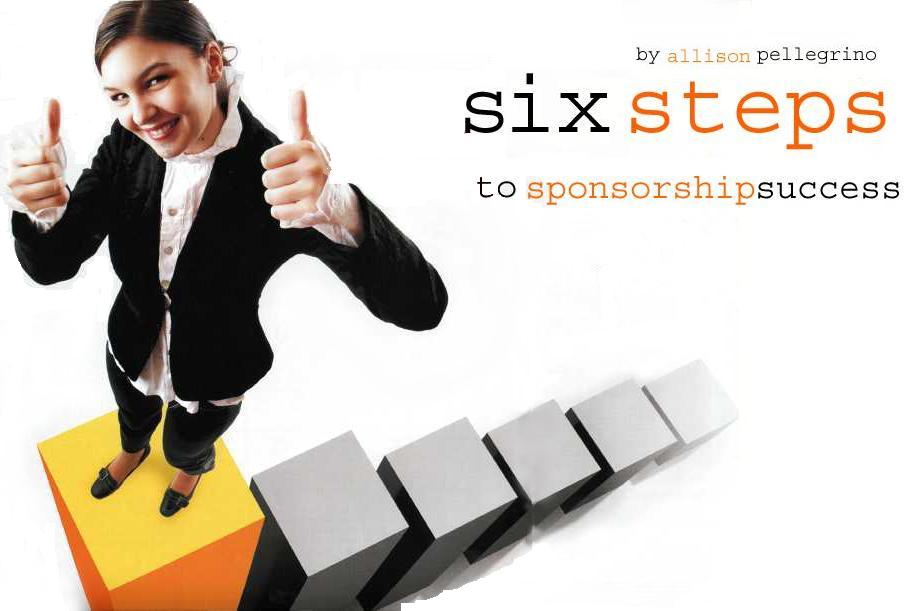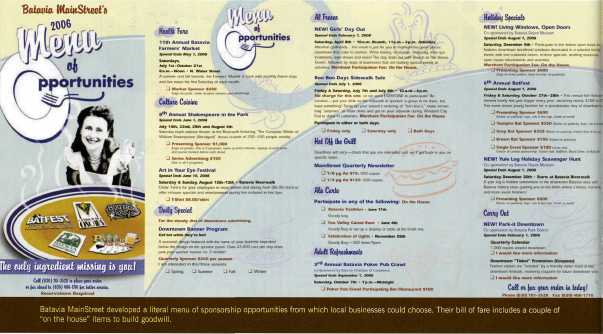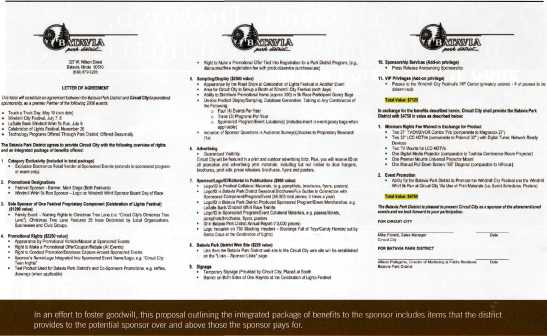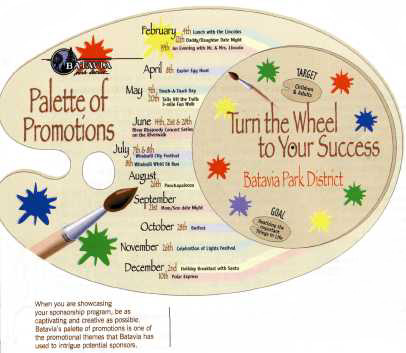
It's 9:00 a.m. on a Monday. You just came back from vacation and haven't touched your day planner in a week. Your voice mail reports that you have eighteen new messages and the inbox on your desk is stacked so high it looks like a model of the Sears Tower.
Then you receive a call from your boss: "We're going to need at least $25,000 in sponsorship money for the upcoming festival!"
You panic and break into a sweat. You were supposed to create sponsorships for the entire year, but....
Where do you begin?
Sponsorship is a cornerstone of any successful agency fundraising plan. According to the IEG Sponsorship Report's annual survey, in 2007 corporations around the globe will spend more than $24.6 billion sponsoring sports, arts, entertainment, causes and events. Hey, if corporations are creating sponsorship line items in their budgets and your agency plans, operates and hosts sports, arts, entertainment and events, what are you waiting for?
Park and recreation agencies can create and manage their own sponsorship programs to make sure they are effective. The Batavia Park District has raised thousands of sponsorship dollars in connection with its events and programs, and so can yours. Try following the steps Batavia took, and then run off in new directions of your own.
www.ILparks.org May/June 2007 19
Step # I: Create an Inventory List and Rate Card
When you step into a restaurant, the host hands you a menu. Perhaps you came intending to order a burger, but you had no idea how appealing the prime rib would sound. And how about those desserts? It's just so with potential sponsors. When they come to your table, they should get to see all their options. That's why you should create an inventory list and a rate card "menu" of sponsorship opportunities available within your park and recreation agency.
Be creative when brainstorming. Snag a copy of last year's budget and see for yourself where programs and events overspent or where opportunities present themselves. Don't rule out items like candy for the Easter egg hunt, T-shirts for day camp, mileage signs for your 5 and 10K races or a banner for your teen center.
Crank the Numbers
After each season, look at the budget to see how much was spent on those items that could be potentially underwritten by sponsors. Apply the necessary math to figure out the unit price of each item. Building the rate card based on reasonably estimated costs (which are based on historic costs) makes the card an important internal tool that assists in gauging appropriate package pricing and value. Since no two proposals will be identical, it will be necessary to calculate each sponsorship item so that every package can be correctly priced. But it's not enough to know cost numbers. Sponsors want a real sense of benefits, too. Because sponsorship is more labor-intensive than measured media and lacks guarantees such as advertising's "make goods," it must over-deliver. For every $1.00 sponsors invest, they should receive at least $1.50 worth of benefits. When a company plans to commit funds to support a program, it expects the folks running the program to have measurable goals and expectations. Some are simple to figure, for example, the number of people reached through a given program or event and comparison data with prior years. Measuring other benefits,

|
for example quantifying the effectiveness of a literacy program, can be a little more difficult. (You might want to know the number of people helped or the average beginning and ending grade level reading scores of the participants.) Probably, the people at your agency who run an event or program have some measuring sticks in place. Be sure to tap their expertise before you describe a program or event's benefits to a potential sponsor.
Perform a Value Assessment
Another way to speak of benefits - both for program participants and for sponsors - is to create a value assessment graph using horizontal and vertical axes to plot the value of your programs, based on information gathered from a variety of sources. The graph shows the value to the prospective company on one axis and the value to the community on another.
|
20 Illinois Parks & Recreation www.ILipra.org
Step #2: Sell Your Products
Dynamic, full-color, snazzy looking sales materials will need to be created. Since many potential sponsors will form their first impressions of your agency by these materials, they must be creative and comprehensive. From a benefits standpoint, they will read like a menu of opportunities. The kit will also include relevant information on your local market, the organization (mission statement, goals) and the entity itself. Include a chart indicating the name of the event, last year's attendance, items that need sponsorship, their quantity and, if you prefer, their unit prices.
The Batavia Park District sponsorship kit includes articles rendered form the local papers, flyers, posters and brochures bearing sponsors' logos and goodwill messages. This allows potential sponsors to salivate over what you are doing with other sponsors. They will do anything in their power to be a part of your entourage.
Don't forget to give back, too. When it comes to relationships with sponsors, few things rival the power of a gift. A gift speaks of friendship. It communicates remembrance. It shows thoughtfulness. It demonstrates you value the relationship. Sponsors grow weary of park districts constantly asking for monetary sponsorships with few returns. When tweaking the sponsorship proposal and preparing to write the letter of agreement, make sure you add benefits that serve as gifts.
When negotiating a sponsorship with a vendor such as a printer or hospital, exclusivity is an option. This is the greatest benefit that you can offer and should be used when there is not going to be a conflict of interest. Choose exclusivity wisely.
Step #3: Gather Your Teammates, but Designate a Point Person
Never keep potential sponsors waiting on the phone or bouncing from office to office at your agency. Designate one main contact person who is in charge of your sponsorship program. That person could be a marketing manager, PR person, director or superintendent. He or she must know the local terrain and must be able to assist in expediting contacts and prospecting for business.
This doesn't mean that many members of your staff should not be involved in the sponsorship effort. Other staff, like recreation supervisors, can play key roles in
|
assisting the sales effort. Devise a comprehensive list of primary and secondary targets and then divide the list so that people at your agency can cover maximum ground. Perhaps your recreation supervisors or other staff members already have existing relationships with key local corporate decision makers. These staff members can help make the initial approach to a potential sponsor, but should do so either in tandem with - or under the coordination of - the person in charge of procuring sponsorships for your agency. Ideally, once sponsorship negotiations begin in earnest, the potential sponsor can deal directly (and almost exclusively) with the agency's sponsorship liaison.
Step #4: Showcase Your Sponsorship
Know your product and PITCH, PITCH, PITCH! Spread your sponsorship opportunities around. Don't overlook the obvious vehicles of communication: newspapers, seasonal brochures, flyers, posters,
|

|
www.ILparks.org May/June 2007 2 1

|
display ads, cable bulletin boards, announcement boards and marquees. Try relationship marketing by becoming a member of the Chamber of Commerce or a similar local group, so your agency is seen as a part of the community, making contributions as well as seeking them. Search for businesses that value advertising.
The Batavia Park District created a palette of promotions design piece that is used to lure hungry businesses one step closer to a sponsorship. The palette is a spinning die-cut wheel that the business owner can shift to align his or her target market with the business's intended goal. When the wheel is in alignment, the paintbrush points to an event that fits the intended target market and goal.
Why not take a peek at how successful entities showcase their sponsorships? Don't limit yourself to the park and recreation field. Check out the City of Chicago's Mayor's Office of Special Events Web page on sponsorships:www.cityofchicago.org/specialevents. Visit one of these company's Web sites that offer sponsorship consulting services: www.sponsorship.com or www.performanceresearch.com. Using the factual information on these Web sites, you can create a proposal or presentation for your park board that will spark a fresh enthusiasm and show your professional commitment to starting a sponsorship program at your agency.
|
22 Illinois Parks & Recreation www.ILipra.org
Step #5: Evaluate Your Program
Conduct a survey using your past and present sponsorship contacts and track the results. Perform a trend analysis of media coverage you gathered for your sponsored programs or events using a 12-month moving average and identifying the amount of exposure.
Count newspaper inches or TV minutes, then multiply the numbers by the cost of advertising in those media to get a sense of the dollar value of the publicity your agency generated. These strategies will better help you track your performance level with sponsors, as well as help sponsors gauge the value of their sponsorship dollars with your agency.
Step #6: Make Arrangements to Attend the C & M Boot Camp: Sponsorship Training to Drive Results in August
When a great opportunity presents itself to learn more about sponsorships, pounce on it. The Communications and Marketing (C & M) Section of IPRA is presenting its first boot camp: Sponsorship Training to Drive Results, where you can learn more about developing a sponsorship program for your agency. The C & M Boot Camp will take place at the Hoffman Estates Park District on August 28 and 29, 2007. For more information, contact Allison Pellegrino at (630) 879-5235 or allisonp@bataviaparks.org.
A well-designed, well-executed sponsorship program will establish an interactive link with the community while simultaneously developing and enhancing affinities with targeted sponsors. It will provide your agency with a positive and highly visible community profile and, ultimately, become its own revenue stream.
Allison Pellegrino, CPRP
is the director of marketing and public relations for the Batavia Park District. She is an IPRA board representative for the Communications and Marketing Section and is also the chair for the C & M Boot Camp: Sponsorship Training to Drive Results. She can be reached at (630) 879-5235 or allisonp@bataviaparks.org .
|


